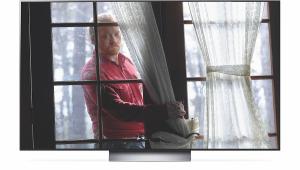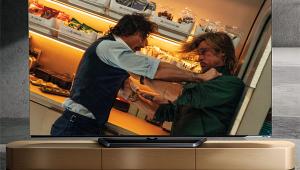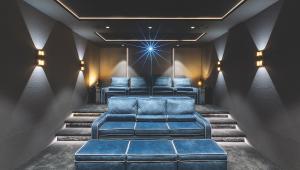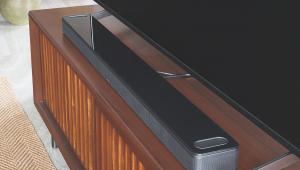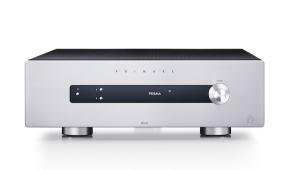Panasonic TX-65DX902 review
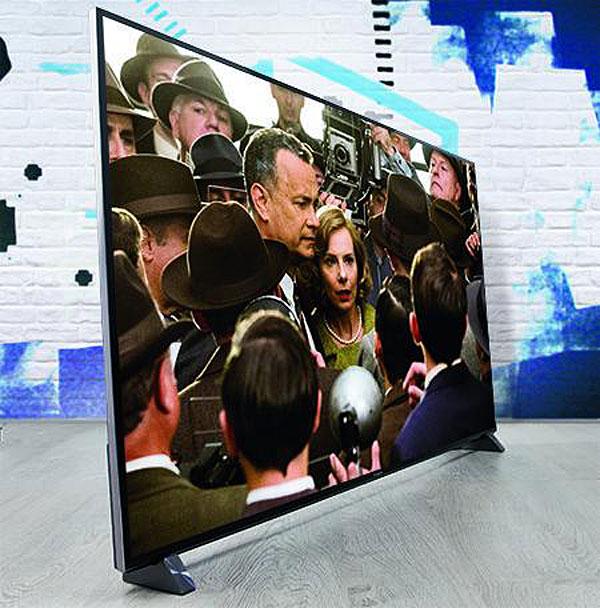
 If you thought 4K was cool, wait till you get a load of HDR (High Dynamic Range). So goes this year’s TV sales patter. HDR brings hitherto unseen levels of dynamism to television, taking home viewing closer than ever (and even beyond) the modern cinematic experience. But, of course, not all HDR is created equal.
If you thought 4K was cool, wait till you get a load of HDR (High Dynamic Range). So goes this year’s TV sales patter. HDR brings hitherto unseen levels of dynamism to television, taking home viewing closer than ever (and even beyond) the modern cinematic experience. But, of course, not all HDR is created equal.
Panasonic’s TX-65DX902B is certified Ultra HD Premium by the UHD Alliance. This means (amongst other things) that it’s able to deliver peak whites of over 1,000 nits, along with an extended colour range, when fed HDR material from physical media, streaming services and broadcasters. In addition to this badge of honour, the DX902 (also available in a 58in version) earns THX 4K certification.
If you’re looking for the bleeding edge (particularly from Panasonic, as none of its other sets get the UHD tick), you’ve found it.
The TV weighs in at 34.5kg. It’s certainly a substantial proposition, and that doesn’t include the stand, which in itself is pretty hefty. Build quality overall is formidable.
Its pedestal feet are ranged close to each edge of the panel, so don’t expect to sit this 65-incher on a compact AV stand. These boots feature a nice, engraved finish that creates a star-lighting effect, while the screen itself has a textured wrap. Both are subtle, but welcome, affectations.
All of the TV's four HDMIs support HDCP 2.2 sources; one offers ARC. There are also three USBs (one a v3.0 for HDD recording), plus legacy component and phono AV inputs. There’s no Scart, but it won't be missed. Other hookups include an optical audio output, Ethernet and an SD card reader useful for digital camera owners.
Onboard are twin tuners for terrestrial and satellite (Freesat). The former embraces Freeview Play, the new DVB platform which has integrated catch-up for iPlayer, ITV Hub, All 4, Demand 5, plus BBC News and Sport apps. Joined by onboard content services ranging from 4K Netflix and 4K Amazon Video to YouTube, Wuaki TV and Chili Cinema, it makes the Panasonic stand out in a world where some other TVs struggle to satisfy our VOD needs.
Driving the TV is done by two remote controls, a Bluetooth touchpad and a nicely finished IR pointer, and overall usability is fantastic. Panasonic continues with its Firefox smart platform. This OS is extremely easy to live with, yet powerful enough to cater for a variety of different users, from family members that just want their favourite channels pinned to the home screen, to enthusiasts keen to shift quickly between sources. The media player is excellent too, and provides compatibility with most video and audio codecs.
There’s even good news for 3D fans. While other makers seem keen to ditch 3D support, Panasonic continues to offer a number of stereoscopic displays in its 2016 range, including the DX902. However, there are no active shutter glasses included with the box, so you’ll need to spend extra if your disc collection is 3D-heavy.
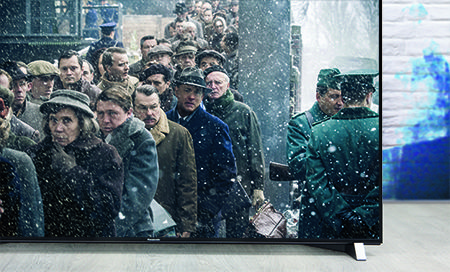
Visually, the DX902 is, quite literally, amazing. It offers levels of televisual vibrancy that I’ve never seen before. The brand’s Wide Colour Phosphor panel, which claims to outperform Quantum Dot tech when it comes to DCI spectrum coverage, is astonishing.
For the bulk of this audition, the set was hooked up to the Panasonic UB900 Ultra HD Blu-ray player, with UHD HDR discs of San Andreas and The LEGO Movie on hand for demos.
The latter is a feast of colour and contrast, and the detail and depth in the image was awesome. In fact, everything was awesome...
San Andreas transpires to be a more challenging watch. Here, all that can be HDR is cranked to the max. Glinting Californian sun, headlights, Hollywood teeth – it's all been mastered to dazzle.
When the film wraps, the movie cuts from end credit crawl to Warner’s standard bright red copyright warning. This jump in level is so dramatic my audience all actually let out a squeal of discomfort. The warning screen should have come with a warning. You can, of course, exercise some control over this, but to reduce brightness on an HDR set seems nothing if not odd.
Panasonic offers viewing presets labelled Dynamic, Normal, Cinema, THX Cinema, THX Bright Room, True Cinema, Custom and Professional 1 and 2. The two THX viewing modes are old-school murky and have not been designed for HDR content. The Cinema mode is a painstaking recreation of a mastering monitor for REC.709, and is as authentically flat as that implies. The go-to setting for most users will probably be Normal. The DX902 obtained its UHD Alliance Premium certification in the Professional 1 mode, but True Cinema and Normal are also recommended for HDR content.
I found that in a darkened room, the Normal setting verged on retina-threatening, with either True Cinema or Professional 1 a better option. There are slight differences between the two. Interestingly, a recent conversation with Panasonic engineers revealed no clear consensus amongst them as to what was the best mode for HDR viewing.
Not that you need an HDR source for this set to shine. This Ultra Bright Panel impresses with SDR and Full HD content, too. Playing The Division on a PS4 is simply a stonking experience – the TV is a dab hand at upscaling sources; subtle texture, shadow detail and deep blacks eked from the console game look exhilarating.
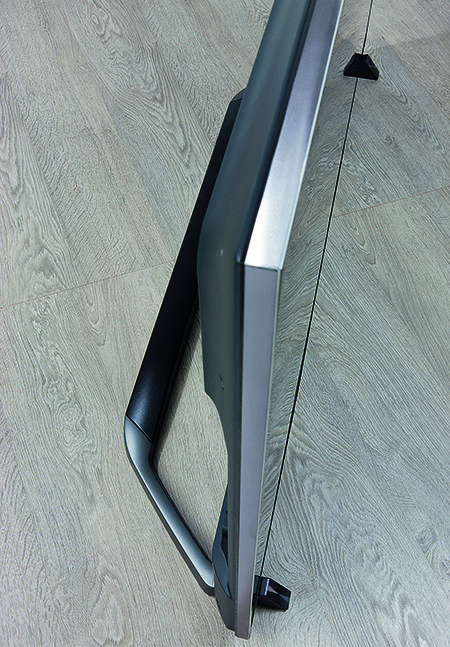
As you might imagine from a top-flight telly, the amount of deep-dive control on offer is considerable, but the defaults are sensible. There's no wild over-egging. Even the Sharpness level is well judged – a setting of 30 is entirely suitable for most material.
At the heart of the DX902 is some of the most advanced image processing ever to grace a Panasonic TV. HDR comes allied to Panasonic’s Studio Master HCX+ (Hollywood Cinema Experience) processor. A slight step down version of this (without the ‘+’) resides in the brand’s DX802 and 750 series screens.
The screen utilises a 3D Look Up Table system that incorporates a registry of 8,000 reference points. The promise is colour accuracy 40 x greater than in a standard flatscreen. New this time around is a colour compensation algorithm to further enhance onscreen accuracy. If you want to see HD content without upscaling (would you?) there is a straight 4 x pixel linear scaling mode.
To achieve the high contrast demanded by full-fat HDR content, the DX902 employs a full array backlight, scoring it a spec sheet hit over the likes of Samsung's KS9000 range and Sony's XD93. There are 512 LED lights arranged in a so-called 'honeycomb' structure that is designed to prevent light leakage.
The arrangement, in theory, allows dark areas to remain dark while points of bright light can shine like tiny stars. While this generally works well, enabling the screen to offer both scintillating highlights and deep blacks, it still can create very visible haloes around illuminated objects.
A 4K HDR firework demo sequence, played back from USB, ruthlessly revealed these backlight blocks. You can attempt to moderate the halo effect by limiting Panasonic's Adaptive Backlight Control. It’s most noticeable on the Mid and Max settings.
And backlight haloing isn’t restricted to HDR content. Scenes of a night flyover of Tokyo, with its myriad lights, from a standard Blu-ray test disc, became a shimmering field of Minecraft-style light blocks with the adaptive backlight set on Mid. The same sequence on Min proved more acceptable but did sacrifice black depth. I should stress that, for the most part, the backlight wasn’t an issue – but when it stood out, the sore thumb was obvious.
One perhaps unexpected upshot of the full array illumination is that the screen is equipped with an army of cooling fans. These start as soon as the TV is powered up. Thankfully they operate at a low level and are generally not discernible when viewing.
Other tweaks include assorted noise reductions plus ambient sensor. The latter is best left off, as it'll visually boost the image depending on transient light levels in the room.
Panasonic gives this set a 3000Hz Backlight Motion Rate (BMR) rating, although beyond marketing hyperbole this really doesn’t mean a lot. It’s just numbers. You might just as well say this TV has higher numbers than other sets in Panasonic’s range, which means it could probably duke it out with rival brands that also boast big numbers...
More pertinent is that Panasonic has added a new option to its Intelligent Frame Creation processor, intended to reduce motion blur. A custom mode allows you to manually set Blur reduction and smoothing. This is useful, as IFC on its Mid and Max settings tends to conjure motion artefacts around some moving objects. Personally, I would rather see some horizontal panning judder than shimmering artefacts. IFC Custom with Blur reduction set to 7 and Film Smooth set to 0 seems to gives a good cinematic balance.
While image quality is the DX902’s raison d'être, its audio performance is perfectly adequate. The 40W rated downward-firing stereo speakers have decent volume for everyday listening, and they don’t sound inappropriately thin. That said, it’s advisable to partner the screen with at least a soundbar, if not a separate sound system.
Where have my socks gone?Not to put too fine a point on it, the Panasonic TX-65DX902B is an incredible TV. As the herald of an upwards shift in image quality, it’s for the most part blow-your-socks-off brilliant. Fine detail and texture, colour performance and shadow detail are all extraordinary.
But there are inescapable issues with just how the set has achieved its Ultra HD Premium rating through that honeycomb LED backlight. It also suggests that maybe a 1,000 nit light-cannon is not the sort of thing you'll always want to let off in the average living room.
HDR aside, the Firefox interface with Freeview Play is about as good a smart TV experience as you can get today. Netflix and Amazon are 4K-enabled, and there’s a battalion of catch-up TV services. The TV is also built to a standard that justifies that price tag. Packages don’t come much more premium.
Specification
3D: Yes. Active (glasses optional) 4K: Yes. 3,840 x 2,160 HDR: Yes. HDR 10 Tuner: Yes. 2 x Freeview HD (Freeview Play); 2 x Freesat HD (Freetime) Connections: 4 x HDMI; 3 x USB; 1 x component video; 1 x optical digital audio output; 1 x Ethernet; 1 x composite video input; SD card slot; headphone output Sound: 40W (2.1) Brightness (claimed): Over 1,000 nits peak Contrast (claimed): 'Ultimate' Dimensions: 1,457(w) x 844(h) x 64(d)mm Weight: 34.5kg
Features: Dual-band Wi-Fi; SD card playback; 3000Hz BMR IFC panel drive; Studio Master HCX+ processor; Local Dimming Ultra; 4K THX certified; Ultra HD Premium certified; Netflix and Amazon 4K; preset picture modes; Adaptive Backlight Control
 |
Home Cinema Choice #351 is on sale now, featuring: Samsung S95D flagship OLED TV; Ascendo loudspeakers; Pioneer VSA-LX805 AV receiver; UST projector roundup; 2024’s summer movies; Conan 4K; and more
|








